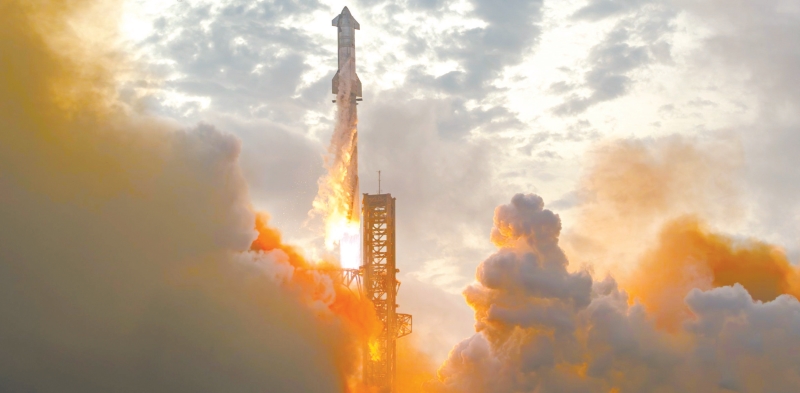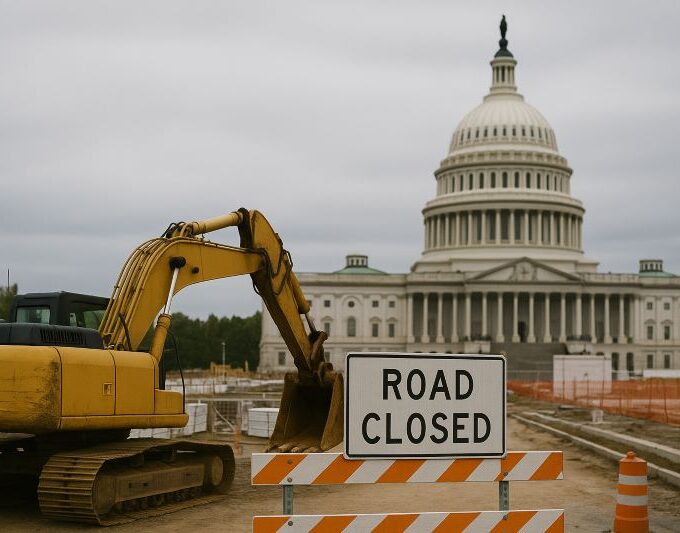On the 20th, during his inauguration speech, U.S. President Donald Trump claimed that he would make the “Stars and Stripes fly on Mars” within his term, sparking curiosity among major media outlets. Some American media believe that Trump’s goal may not be entirely unrealistic and could potentially promote significant advancements in U.S. space exploration. However, other media outlets question how this can be achieved in just four years, considering that the U.S. is still facing numerous challenges with its “Artemis” manned lunar landing program, which has yet to be realized.
Strong Support from Musk
After being sworn in as the 47th President of the United States, Trump immediately delivered a speech lasting about 30 minutes in the circular hall of the U.S. Capitol, where he explicitly mentioned “sending American astronauts to Mars.” In his speech, he stated, “We will send American astronauts to Mars, and plant the Stars and Stripes on Mars… this is the lifeblood of a great nation. Today, our country is more ambitious than any other. No nation can match us.”
On the 21st, the U.S. “Space” website stated that America’s expansion in North America in the 19th century laid the foundation for the current United States. Trump’s speech applied this concept, shifting the focus to space exploration. The report also noted that Trump’s remarks received strong support from billionaire Elon Musk, the CEO of SpaceX, who was present at the inauguration and gave a thumbs-up in approval. Musk has long stated that his goal in founding SpaceX is to send humans to Mars, making humanity a multi-planetary species.
The New York Times reported on the 21st that Trump did not reveal the specific details of the Mars landing plan, including what it means for NASA’s current lunar landing program, when astronauts might reach Mars, and how NASA would fund the project. Trump had previously expressed his desire to land on Mars. On October 9 of last year, during a campaign rally in Reading, Pennsylvania, he promised to land on Mars during his second presidential term. “We will lead the world in space, and we will reach Mars before my term ends.” In another rally, he urged Musk’s crewed Mars program to accelerate: “Elon, get those rockets moving because we want to reach Mars before my term ends.”
According to the U.S. political website, Trump and Musk have reached a high level of agreement on the goal of landing humans on Mars. Musk became one of Trump’s key allies and political donors during the election campaign, hoping that NASA would abandon the moon-return plan and head directly to Mars. Musk has frequently referred to Mars colonization as “life’s insurance.”
During the 2020 Christmas period, Musk posted on social media platform X, stating, “NASA’s Artemis program is inefficient because it’s a jobs-maximizing plan, not a results-maximizing plan. We need something entirely new.” The next day, Musk called for skipping the moon program entirely: “No, we want to go directly to Mars. The moon is a distraction.”
However, Musk’s position contrasts sharply with NASA’s current plans. NASA Deputy Administrator Jim Free has stated that the Artemis manned lunar program is perfect and doesn’t need changes. The report also noted that, given China’s advancing manned lunar program, Congress is not currently inclined to support Musk’s proposals.
Is There Enough Time?
The first concern regarding the feasibility of Trump’s Mars landing plan is the tight schedule. The New York Times mentioned that, aside from technical details, the timeline suggests that Trump’s Mars landing plan may not be entirely impossible. Trump did not specify whether he meant sending U.S. astronauts to Mars before January 20, 2029—the last day of his presidency, or if simply sending a crewed spacecraft to Mars just before the deadline would suffice.
The report highlighted that in September 2022, Musk revealed a relatively clear Mars landing timeline: SpaceX will launch five uncrewed spacecraft to Mars in 2026 to test their ability to pass through Mars’ thin atmosphere and land safely on the surface. Musk said that if these missions are successful, the first crewed Mars flight would take place four years later. He added that after that, SpaceX would frequently launch crewed missions to Mars with the goal of establishing a self-sustaining Mars city in about 20 years.
In terms of schedule, is it feasible for Musk and Trump to achieve their Mars plans? Analysts point out that Mars is over 400 million kilometers away at its farthest point and about 55 million kilometers at its closest. Choosing the right time to launch spacecraft can significantly reduce travel time. For instance, Mars and Earth were closest in October 2020, and based on Earth and Mars’ respective orbits, the optimal launch window for Mars missions is typically a few months earlier. For example, in July 2020, the UAE, China, and the U.S. each launched Mars missions.
Mars and Earth have an average conjunction period of about 780 days, or 26 months, during which the two planets are at their closest. January 2025 will be the closest approach in the current cycle. The next closest approach will be in March 2027, roughly aligning with Musk’s plan to launch uncrewed spacecraft by the end of 2026. However, the next closest approach after that will be in May 2029, which means Trump would need to launch a crewed spacecraft several months ahead of schedule to meet his goal.
As for Trump’s ambition to see “American astronauts plant the Stars and Stripes on Mars” during his presidency, it seems nearly impossible. For example, NASA’s Curiosity rover launched on November 26, 2011, and landed on Mars on August 6, 2012, taking about 8 months; Perseverance launched in July 2020, landing in February 2021, taking roughly 7 months. If Trump wants to see astronauts land on Mars within his term, the spacecraft would need to launch almost a year earlier, significantly increasing travel time and mission complexity, leading to unnecessary risks.
Multiple Technical Challenges Unresolved
Apart from the stringent timeline, there are various challenges to advancing the Mars landing plan. First, concerns from the political sphere. The “Space” website stated that the driving force behind the Trump administration’s changes to the Artemis program was to “maintain U.S. leadership in space,” particularly in the context of “countering China’s space ambitions.” In recent years, China’s space program has rapidly advanced, with the latest goal being to send astronauts to the Moon by 2030, and to establish a crewed lunar research station in cooperation with Russia. China is also speeding up its Mars sample-return schedule, which could complete as early as 2031, well ahead of NASA’s Mars Sample Return mission. The report notes that both the U.S.-EU Mars sample-return plan and the Artemis lunar program are facing escalating costs and delays, and will likely undergo major changes during Trump’s tenure. However, if the U.S. government shifts its focus to Mars landings, it would pose significant technical risks and could undermine the country’s “space leadership” by abandoning the two major projects. “Space” states that if China becomes the first to land on the Moon, it would deliver a significant blow to America’s space ambitions.
Secondly, Trump’s push for the Mars landing program would lead to a major shift within NASA, creating considerable confusion. Currently, many within NASA still advocate for continuing with the Mars sample-return and Artemis lunar programs. However, as Musk is tasked with ensuring efficiency in the federal budget, there are concerns that the Artemis program, especially the Space Launch System (SLS) rocket, might face significant budget cuts. SLS, which is designed to send the Orion crewed spacecraft to the Moon, has a high cost, launching only once every two years at a cost of $4.1 billion per launch. SpaceX’s Starship is expected to bring launch costs down to under $10 million per mission, putting Artemis under intense criticism.
Similar issues exist in NASA’s Mars sample-return program, with analysts arguing that once SpaceX’s crewed missions to Mars are successful, continuing to spend billions of dollars on the Mars sample return mission by 2040 would seem pointless. Experts suggest that a logical alternative might be for Musk to integrate the Mars sample-return mission into SpaceX’s plans.
The “Space” website speculates that NASA’s budget cuts in recent years make it unlikely to support multiple major deep space missions simultaneously. Therefore, the Trump administration might choose to cancel the costly Mars sample-return and Artemis lunar programs, redirecting funding to Musk’s Mars landing program. However, such a shift would lead to significant confusion and further tighten an already urgent timeline.
The New York Times criticized that Musk has long provided overly optimistic timelines for his rocket development. In 2016, he predicted that SpaceX’s first Mars uncrewed mission would launch in 2022, with astronauts heading to Mars this year. While SpaceX has made substantial technical progress, it is still far from being ready for a Mars mission. Even for a one-way mission to Mars, the Starship rocket must first complete critical fuel-resupply technology tests in orbit. SpaceX previously claimed that on-orbit refueling would significantly reduce launch costs, but the reality is that Starship has only completed its seventh test launch, which faced setbacks. Technically, Starship is still far from being certified for crewed flights, and many key technologies remain untested.
For crewed missions, the requirements for the spacecraft are much higher than for uncrewed probes. For instance, astronauts on a Mars mission will need at least seven months of space travel, meaning Starship’s life-support systems must reliably ensure the spacecraft remains habitable. Additionally, the spacecraft must protect astronauts from intense cosmic radiation in deep space. “Space” also noted that long-term space travel could have unpredictable psychological effects on astronauts isolated in the spacecraft.
Once astronauts successfully land on Mars, the return journey will require additional unverified technologies. Given the conjunction cycle between Earth and Mars, astronauts will need to stay on Mars for over two years before returning, meaning the spacecraft will need to provide life support for at least two years and ensure enough supplies for the return trip. This could require launching multiple Starships to carry sufficient supplies. Additionally, NASA will need to conduct further exploration on Mars’ surface to select a suitable location for long-term human habitation.
Furthermore, Starship uses methane and oxygen as fuel, and will need to replenish these supplies for the return journey. Although SpaceX has boldly envisioned extracting fuel from Mars’ atmosphere using solar power, this technology is still in its early stages and far from being operational. The New York Times imagines that, in the early stages, SpaceX might send numerous Starships carrying additional fuel to refuel the return spacecraft in Mars’ orbit, but this would significantly increase mission complexity and risks.













Leave a comment